Lula Magazine Interview
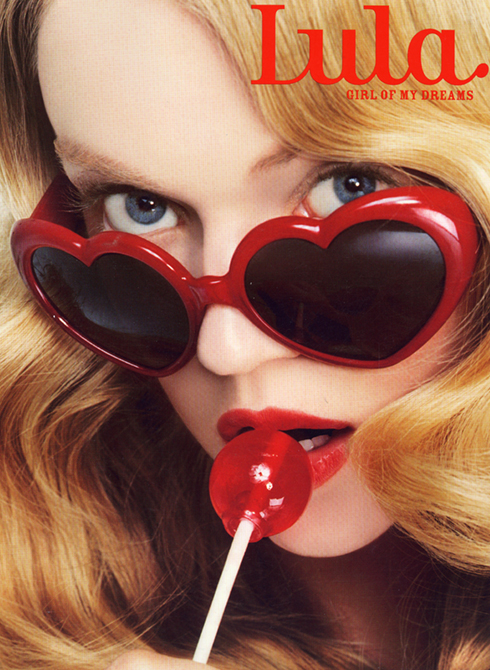 Lula : Hello, we are so excited to talk to you, we at Lula love your films and your world, and we are thrilled to talk to you about them
Lula : Hello, we are so excited to talk to you, we at Lula love your films and your world, and we are thrilled to talk to you about them
This is my first e-mail interview, so I find it really awkward. I find it difficult, because it is more like writing an artistic statement – you have time to think out each question, and carefully craft our each answer, edit it and put any slant on it you want – almost like a creating a persona which has been planned. In a live interview you are put on the spot immediately and there is so little time to wiggle out, if you trap yourself into a corner – you are much more naked. I guess it is a sign of our times, people are more communicative by e mail and chat room. I’m still in the fossil world, so forgive me if I seem awkward.
I am so excited that HEY BABE ! and FUN, were part of Leith’s list of favorite films (and apparently she didn’t know they came from the same director) – Wow! It is especially exciting because both films didn’t receive such wide distribution and it would be so exciting for me to give them new life. And I’m encouraged that you responded to AGE OF KALI, which comes straight off the press and hasn’t been seen by anyone yet. I’ve been warned that it may offend some people, perhaps some women – however I did show it to my wife and my mother (who saw it only after the editing was completed), and they thought the film had promise (although my mom thought it had too much sex in it).
Anyway, thank you for the opportunity to talk with you and share what I have learnt so far.
How are you?
It is scary, because this interview it is sort of like a mid career artist statement – and one has to face the reality that I have made only a fraction of the films I have dreamed of making. I haven’t even gone through a fraction of the pile of scripts and outlines, sitting in the closet. But at the same time as one grows along the path of life, and follows some kind of spiritual search, one begins to realize that it is not how much you really produce but how much love you put into the producing. And I have loved intensely the three films were are focusing on here. So now I feel more comfort in sharing my thoughts and experiences with you. I have had to follow sort of a schizophrenic path – on one hand, making films that I was involved in writing and wanted to make (HEY BABE !, GINGER ALE AFTERNOON, FUN, AGE OF KALI and BOHEMIA) and the others, which were films I was hired to direct, which were not stories I was really interested in telling and which I approached more like a craftsman – like a painter being commissioned to paint someone I was not particularly interested in painting (although I must admit making some, especially the Roger Corman “Screwballs – trilogy” was crazy and literally “fun”.
 Where are you right now? And where is home?
Where are you right now? And where is home?
I just returned from Montreal, where my parents live, and where we shot “HEY BABE !”. I’m in Los Angeles, where I’ve been living here for the last 15 years, but I was born in Poland and prior to that I lived in Montreal. I’ve been so fortunate in my life to have traveled so much and lived in so many places when I was a child. We left Poland when I was nine. The culture shock of arriving in New York, after the grayness of Communist Poland, was something I will never forget. That excitement of seeing America, it’s energy, dazzle, color, grittiness, it’s pulsating, explosive music, I tried to capture in “HEY BABE !“.
After one week in New York we moved into suburbia – which was even more bizarre – my father got a job as a professor in Raleigh North Carolina, where we spent the next two years. Perhaps subconsciously through this suburban American experience the seeds of making FUN, came from.
When you were little, did you know that you would be doing this when you grew up? What were you like when you were little? Can you tell us about your childhood? Do you think that it had an influence on what you have ended up doing, and how you do it?
What I recall from Poland, is that I was a total loner and very shy. I had a crush on the most beautiful girl in school, and I remember being so terrified of running into her when we took walks with my mom I would make sure we would stay away several blocks in a wide circle from where she lived, in case I’d bump into her. Apparently I was a day dreamer, and would spend hours playing by myself in the sandbox, living in a world of fantasy. Sometimes I was so much in my head that I’d sit through a whole exam daydreaming and fail not answering any questions. My parents were worried that I was not normal.
Moving so much from country to country, from school to school, made one feel displaced – an outsider who had to “blend in”. It gave me that duality of being in that world, while observing myself in it at the some time. That feeling of alienation I tried to capture for example in AGE OF KALI, because it is very much about the city of LA, and it is probably one of the most alienating cities in the world. I think we all feel somewhat alienated living here, and I imagine even the most successful and famous people, oscillate between euphoria and alienation too . When we moved to Raleigh at age nine I was placed in school without speaking a word of English. It was cold turkey for sure, like an alien placed on a distant planet. I was definitely the center of attention for the whole school.
On our first trip around the world, when my dad got the job as a Ford Foundation consultant in Cairo, and decided to take the long way around – the Pacific route. That’s where I got a present that changed my life – an 8mm Sanyo. The plane from Tokyo had a stop over in Taiwan, and at the duty free store my dad got me the camera. From them on it was my constant companion, and also a shield behind which I could hide as we traveled through Hong Kong, Burma, India, Pakistan, Iran, Lebanon, Syria and Cairo. After one year in Cairo, we emigrated to Montreal, Canada and the came another amazing adventure – India.
What were your teenage years like?
My early teen were spent in Calcutta India, where my father was a Ford Foundation Consultant. India had a tremendous influence on us, spiritually culturally, intellectually. For the first year I lived with my parents and went to the American International School. Calcutta, as well as being the most poor is probably the most rich spiritually and culturally. It’s the religion, mysticism and philosophy that had the most profound influence on me.
After one year I was sent to a boarding school in England – Stowe School, in Buckingham, where I spent 4 years, spending vacations with the family in India. It was an all-boys school at the time, and once again I felt so much like an outsider. I immersed myself in literature and art – sculpture.
I shot my first 16mm documentary film one summer in India “One Day with Shiva”. Filmmaking became irresistible drug and habit, which to this day I can’t kick.
After graduating I was accepted to the Slade School of Art, but chose to go to MIT in Boston, because I felt drawn to Art and Technology. This eventually led to documentary filmmaking, as MIT Film department was run by the godfather of cinema verite Richard Leacock. My first films were all documentaries.
Do you have any children of your own now? [Can you tell us about them?]
I have a son, Noah who is almost 9 years old. He is very charismatic and has a huge heart – and he is a miracle because he’s making me come out of my head. (My wife keeps on complaining that for too long I’ve lived in my head).
You have said that Hey Babe, Fun and Age of Kali are like a trilogy. Did you have the idea for all of them from the start? Did you always know there would be three films, and how they would be? What are the things that make them a trilogy? Which aspects or themes make them relate to each other?
Each came on it’s own, but after making all three I realized they were a sort of trilogy – about America. HEY BABE ! is full of hope and “Star-is-born” type optimism, FUN is bitter sweet, but with hope for redemption, AGE OF KALI is pessimistic and offers no hope in the end – that’s how I feel. But like the eastern philosophies state, it’s all cyclical, and the gateway to new rebirth and new hope.
In each one there is a very definite, almost Lolita-like girl. Where did she come from? Is she based on someone you knew, or is she from your imagination? – and why does she speak to you as a character?
The combination of youth, purity, beauty and power as embodied in archetypical “muse” deity – inspiration for artists down the ages – she is so attractive and intoxicating because she is so elusive, impermanent and in a way unattainable – and she grew older with each film, as I got older.
According to eastern mysticism creative energy and carnal desire are totally intertwined, aspects of the same energy, and that probably had something to do with it, as well.
“Hey Babe” was your first film – How did you come to write it and make it? You created such a distinct world and mood with it – was that something you had been planning for a long time?
I always loved the old musicals, and being still I very young director. I was in my early twenties when we wrote the script (with Edith Rey, who was a painter friend, and had never written a screenplay before). I felt I wanted to make a film about childhood, about a child entering the world of adults – still a fairy tale with fantasy elements. Perhaps being mostly away from home since the age of 13, made me relate toy Theresa, and having such a “fantasy childhood” traveling twice around the world, living in India and Egypt, and then coming back to the gritty reality of Canada, made me identify with this character.
What was Yasmine Bleth like when she was 12? How did she come to play Theresa? Are you still in touch with her now?
She was multi-dimensional, expressive, vibrant, glamorous, and capricious – a true Gemini. When we wrote “Hey Babe,” we saw her as a Gemini. We were casting in New York and saw almost all the child actors that existed. Many came from theatre and had performed in various shows like “Annie”, and felt too manicured, too polished, too mannered. Yasmine had a natural presence that stood out immediately, an attitude and rebelliousness – you immediately felt like you were in the presence of a star. I regret that after the our movie came out she did not take more of a serious education-path to deepen her craft, but rather fell into the trap on relying more on her beauty which led to a TV career and roles in shows like “Bay Watch”, and times of darkness, which come with the territory when youth starts fading.
I’m a bit of a loner, and shy away from social life. Working with actors is such an intense, emotional and personal experience, that afterwards you sort of feel spent – like going through a relationship – after the filming is over, one almost feels like taking a distance – like giving birth to child and then letting them go out into the world on their own. Afterwards revisiting the relationship one feels almost too vulnerable, because one becomes aware of the painful human reality, rather than the fantasy of the character that we created together.
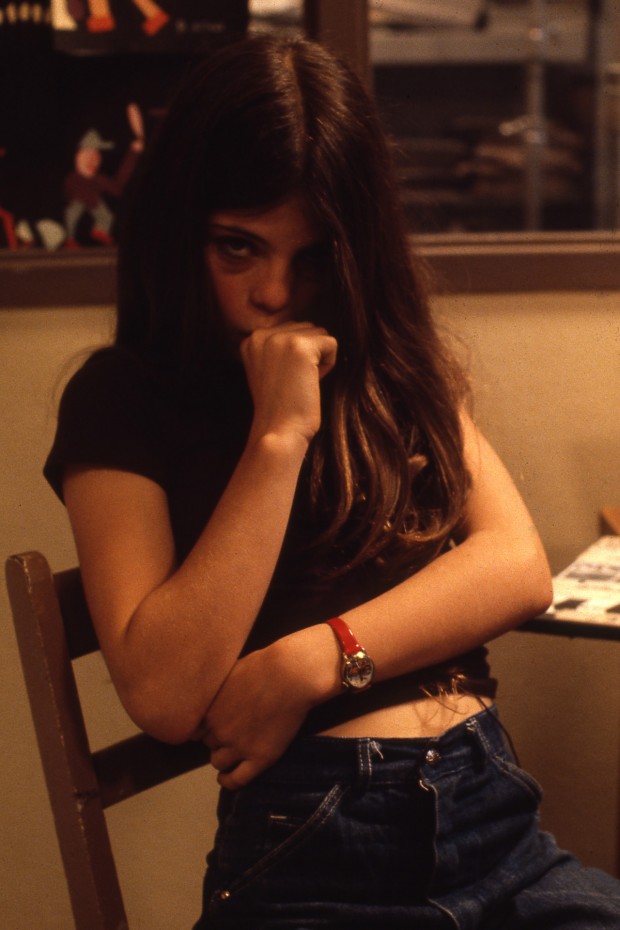 Who decided the way Theresa would look – her costume and makeup? Where did the ideas for how she would look come from? Is that aspect important to you when you are creating a character? Do you know the sort of things that they will wear in the same way you would know how they would answer a question? Do you work with the same team to create the characters’ looks for all your films?
Who decided the way Theresa would look – her costume and makeup? Where did the ideas for how she would look come from? Is that aspect important to you when you are creating a character? Do you know the sort of things that they will wear in the same way you would know how they would answer a question? Do you work with the same team to create the characters’ looks for all your films?
I’ve always been visual – too much so, perhaps. Since I started off more as an artist, sculptor, at first I approached film more like visual poetry. I was drawn to surrealism, fantasy, poetry. As I matured I discovered realism, emotion and truth. In retrospect I find HEY BABE ! too visual, and lacking somewhat in truth. In FUN, I swung in the opposite direction choosing to shoot in a gritty black and white cinema verite style (with the exception of the flashback sequences which were shot in a hyper kinetic highly saturated color visual style, as if trying to get inside the two girl’s heads and have the viewer experience the thrill of the moments the girls spent together during that one fateful day in which they committed such a horrendous crime). HEY BABE ! was very influenced by the disco and glitter era.
Each film was crated by a completely different team, as they were shot in different countries at different times.
The way your films look is so strong and distinctive (and we love it) – how do you go about creating a visual world for each film? Is what we see on film what you see in your head? What sort of things inspire how your films look?
I’ve tried to create a distinctive visual universe in each, where the style reflects the story and the mood one is trying to convey. I find, it is very important to have a clear picture of the mood and atmosphere of the film one is trying to create as it completely affects the way the film will be perceived by the audience. Every story can be told in numerous ways and the mood can completely change the genre – literally a comedy can be made into a tragedy, by just the mood. In technical terms I love to play with the visual by manipulating the style of photography, camera placement, movement, choice of lenses, lighting, choice of film stock, color timing, editing rhythm, etc., choice of locations, sets, costumes, make up and even music – I’ve found that even colors have an emotional quality that can be altered by the music, or the emotion of the scene that directly preceded the current one.
I try to draw on everything, photography, music, books, characters and places I have met and visited, sometimes other movies (but I mostly classic films, not contemporary ones).
HEY BABE ! was shot is a glittery colorful way, capturing the intense disco colors of the era, for example, while FUN oscillated between gritty black and white cinema verite style, where each scene was one continuous shot without cutting. AGE OF KALI is inspired by minimalist art and modernist architecture, the cool existential shapes mirroring the emptiness of the character’s lives. It was also my first film shot in High Definition which gives it an almost hyper real quality.
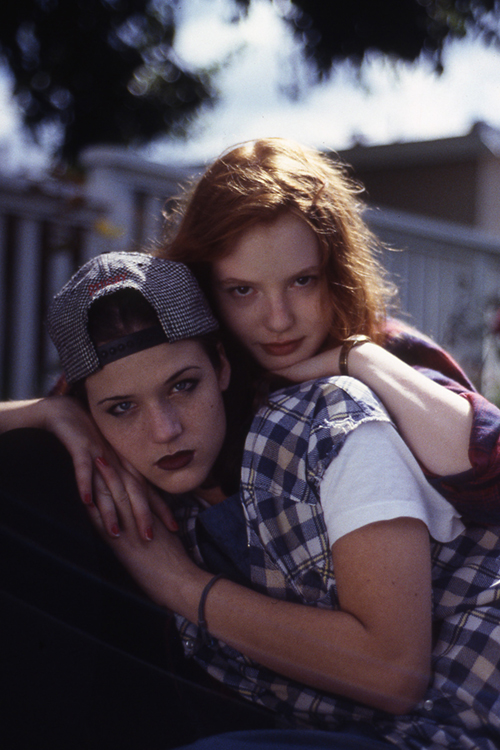 How did you find the two main actresses for Fun? What do you look for when you are casting someone for your characters – do you have a very strong idea of the sort of person you need, how they will look or sound?
How did you find the two main actresses for Fun? What do you look for when you are casting someone for your characters – do you have a very strong idea of the sort of person you need, how they will look or sound?
I met Renee on the film set of a movie called “Streetwise”. It was a film that ran into trouble and the producer asked me to come in half way through filming and complete it. It was a story about a runaway girl on the streets of Hollywood who forms a friendship with young policeman. Rene had a deep and mysterious inner life which immediately fascinated me – there was sadness, darkness and many secrets. I discovered Alicia in a tea room at a grand hotel (the Beverly Wilshire Hotel), where she was a pianist. I was having a meeting with a screenwriter Gina Wendkos (who wrote another film that I had directed, GINGER ALE AFTERNOON, which premiered in the competition at Sundance Film Festival), and we kept on being drawn to the pianist who looked like she was in a trance as she was playing. Gina spotted her first and immediately felt she had star quality. When we waved her over, she revealed that she had already been discovered by David Lynch, who cast her as the baby princess in “Dune”.
Both Alicia and Renee were 16/17 at the time and the characters they played (Bonnie and Hillary) were 14/15.
When casting I always try to be surprised and often cast the opposite of how I imagined the characters. In AGE OF KALI, we cast Whitney Able, who is ethereal, sweet, blonde and the character was written as a dark haired, stark, almost devilish character – one always looks for someone with an inner life that transcends and stands out – and believe me casting is the most difficult and time consuming part of filmmaking – it took us months to find Whitney and she appeared as if by magic in the very last minute. If you can’t cast a film correctly, there is no point in making it.
Where did the idea and story of Fun come from? Was it inspired by a particular event? Where do the ideas for your films come from? What sort of stories do you like most? What is your favorite book or story?
In a suburban wasteland of freeways, fast-food and pre-fib housing, two teenage girls meet one morning, become fast friends, share their secrets and later that afternoon, on a rising wave of frenzy, murder an old woman. They did it, they later say, for “fun”. Bonnie and Hillary, 14 and 15, staunchly refuse to soften their stand and challenge their adult inquisitors to defend a society that offers them no voice, no understanding, no love.
The story moves from the juvenile detention center where the girls are kept, to the girls on the day of the killing – we see them meet, talk, confess painful details of abuse and neglect. They share pain and secrets and find joy in their discovery of a kindred spirit – at last. It’s like “love at first sight”. They “get high just on each other’s company.” They begin a journey of ecstasy and murder. John is a journalist given the challenge of making sense of this “senseless crime.” Jane is a counselor committed to breaking down the barriers that block the girls’ from expressing any remorse over their crime.
FUN was actually inspired by a true story that actually took place in California a few years back. James Basely, a New York playwright wrote a short one hour play about the two girls. I saw the play at a festival in Los Angeles. I saw in it the chance to examine the nature of violence in America, and how it affected it’s youth. I contacted him and we developed the play into the film.
Ideas come from all sources. I like to read articles, hear people’s stories, – actually the best stories are obituaries, because they are real human stories – not fabrications. I like stories that inspire, illuminate and raise our consciousness. Theater and plays are often best sources. FUN was a play that we developed into a movie. In AGE OF KALI, I worked with John Steppling who is a well known play writer whose controversial plays about the underbelly of Los Angeles, I always admired.
In all three of your films, there is an absence of the parents of the main characters. Is that a conscious decision and what does it mean for your characters? Is that something you experienced in your life?
I was sent to boarding school in England at the age thirteen and basically was on my own from then on, except for vacations – I felt like I was my own man, and loved that feeling of independence, of being my own man, and I tried to convey this in the inner lives of the characters in the films.
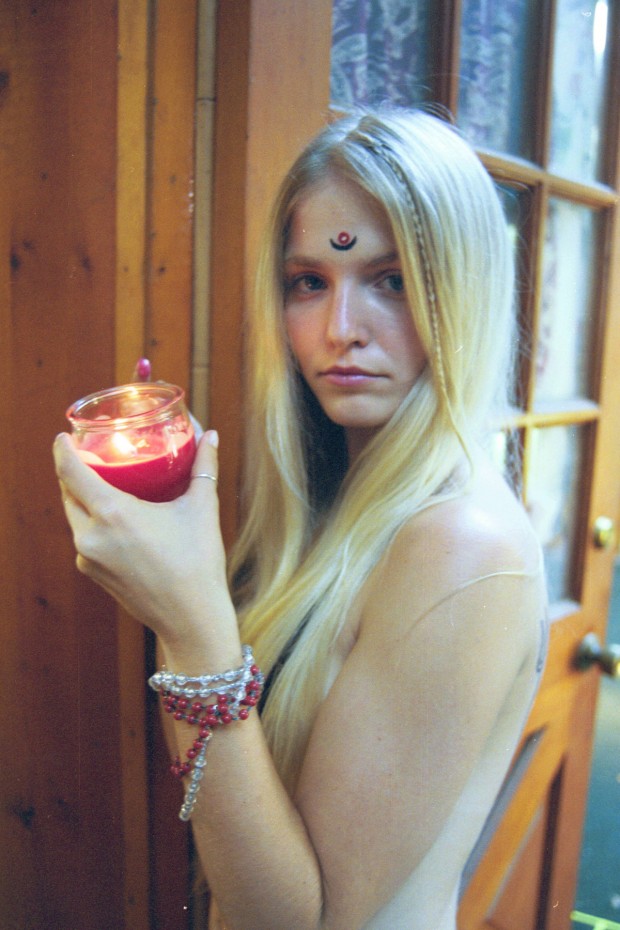 You are about to release Age of Kali. What was the inspiration behind it? What can you tell us about it? How does it relate to your other two films?
You are about to release Age of Kali. What was the inspiration behind it? What can you tell us about it? How does it relate to your other two films?
I’m about to “release” it into the public on-line through my on-line distribution initiative FilmArtMovies.com. I hope it will find it’s place in, the world. According to Hindu beliefs the world is currently in the “Kali Yogi” cycle (Age of Kali), a time of decadence, emptiness and darkness; humanity indulging itself in desire, materialism, acquisition, deviation from spirituality, and lower states of existence – this global phenomenon, no better exemplified than by North America and specifically in this story by the city of Los Angeles. The film is about a couple who sinks deeper and deeper, hoping to find illumination through sex, and to save themselves in this place of money, power and beauty…
What do you love best about what you do, and what drew you to doing it in the first place?
What I love about film is that is a medium that combines all the art forms – theatre, literature, photography, music, painting, poetry… and the ability to create a illusory universe of it’s own is intoxicating. One feels like a creator, like God; but that can be addictive, too.
Who do you make your films for? Do you imagine a particular person watching them?
I hope for an audience. It is rewarding to see your film relate to many people, in many cultures. I hope I haven’t been making them, just for myself, although I worry about this a lot, because they haven’t found a wide audience. But on the other hand I can’t relate to most of the major Hollywood films out there which appeal to the mass global audience.
Is there anything else you want to do – like write books or make art – or do you think that you will always make films?
I would love to keep on making films, and going back to sculpture might be a solution, if I cannot find the financing to make more films. Financing is the “paint” that filmmakers need to paint, unfortunately.
Who or what has been your biggest inspiration?
Fellini, Antonioni, Kieslowski, Tarkowski – and the practice of meditation.
I’ve meditated since age of thirteen in India – it’s been a source of real spiritual growth and true inspiration. Now I practice a form of Kundalini Yoga, with is a meditation aimed to open the heart and raise consciousness. It has produced profound changes in myself, and has made me more open to life.
What makes you happy?
Making a movie that you feel totally passionate about, and being able to make it exactly the way you see it without having to compromise or please anyone except the audience and myself. But ultimately according to more enlightened beings I’ve come across, that is all an illusion. Sitting in meditation ultimately is true happiness, as one is beyond happiness, or sorrow —it all just melts away, like clouds passing through the sky, and one just “is”. Just “being” is pure joy, and the conscious awareness of it. All else, even film, is a transient. Afterall film is such a young art form, maybe it won’t even exist in a hundred years, to be replaced by another form of storytelling. But story telling will not die – it’s been around since the dawn of mankind.
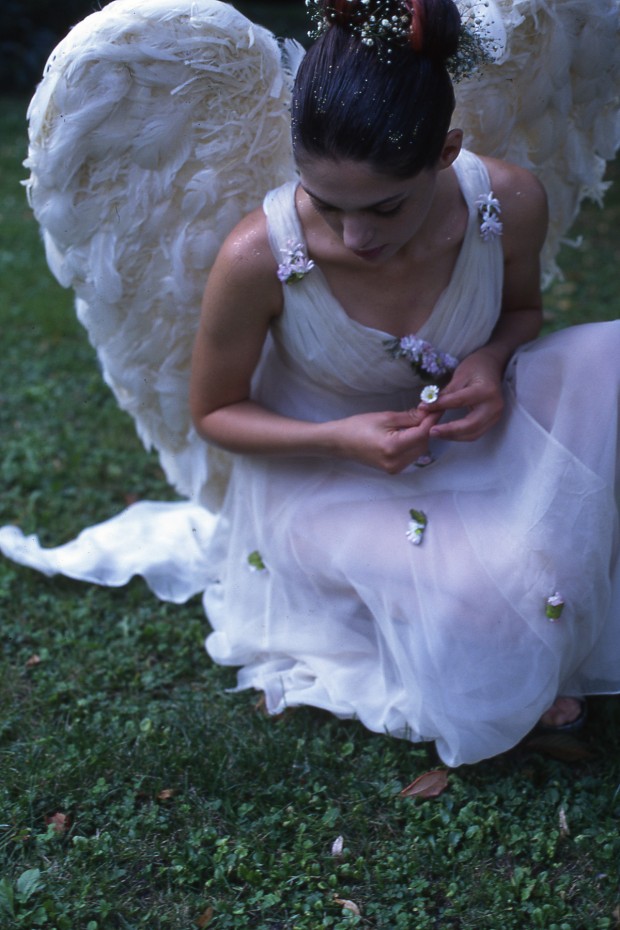 What are you going to do next?
What are you going to do next?
“Bardo”, a film about life after death, reincarnation and love, is the ultimate project I hope to do one day – one that I have been dreaming about for many years. Coming in contact with Eastern religions has made the subject of afterlife a source of fascination for me. I remember watching the cremations on the banks of the Ganges river, having shivers hearing Tibetan monks chanting in temples in Nepal, and having vivid dreams after reading the Tibetan Book of the Dead… and thinking about the meaning of life and death – it’s been a constant source of wonderment and search.
But literally, now I’m gonna take a walk with Noah. He loves taking walks in the canyon where we live (Laurel Canyon – it has a lot of history – they call it the “rock and roll” canyon, because so many musicians – Joni Mitchell and Graham Nash, Frank Zappa, Slash, Alice Cooper, Keith Moon and many other have all lived here).
Now I’m out of my head. But then as I walk through these winding hillside mountain roads, past lush vegetation, everything flowering in spring bloom, holding his little hand, I cannot help but create little movies in my head about all the different scenarios that might have taken place in these solitary houses sprinkled amongst these magical perfume scented Hollywood Hills…